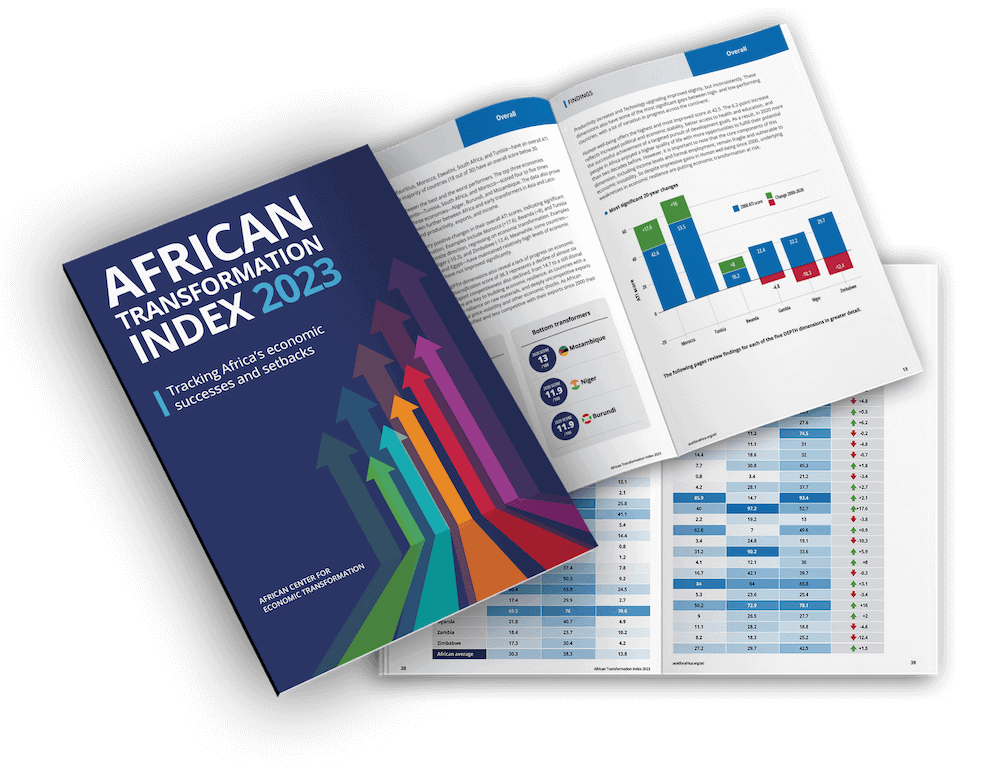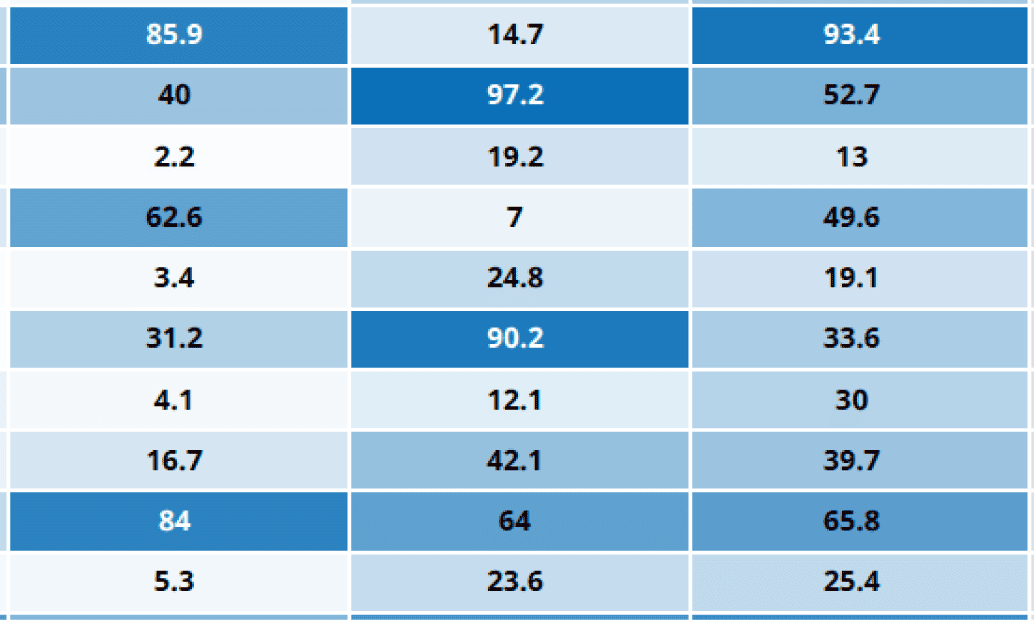ATI
COUNTRY PROFILE
Nigeria
Nigeria is a lower-middle-income country with the largest economy in West Africa. Economic growth has been generally positive over the past two decades, reaching an all-time high of 15.3 percent in 2002. Nigeria is a medium economic transformer. Its economic transformation has improved significantly since 2009, especially in Technology upgrading, Human well-being, and Productivity increases. However, it still ranks below the African average in Diversification and Export competitiveness.

Abuja
218.5 million
2.4 %
3.3 %
US $2,184
Nigeria’s Performance on the African Transformation Index
The overall African Transformation Index score measures the five dimensions of DEPTH.

Overall score
34.5 /100
Score change
since 2000
At a glance
- Nigeria is a medium economic transformer with an overall ATI score of 34.5.
- It sits slightly above the overall African average of 30.3, but it scores well below the African average in Diversification and Export competitiveness.
- Nigeria’s economic transformation outcomes have improved substantially starting from 2012, particularly in Technology upgrading.
| Score /100 | Change since 2000 | ||
Diversification | 16.4 | -5.8 | |
Export competitiveness | 1.2 | +1.2 | |
Productivity increases | 31.2 | +16.4 | |
Technology upgrading | 90.2 | +3.4 | |
Human well-being | 33.6 | +14.4 |
Diversification of production and exports measures countries’ capability to produce and export a widening array of goods and services.

Score
16.4 /100
Score change
since 2000
At a glance
- Nigeria has one of the least diversified economies in Africa, and it has become even less diversified over time.
- The services sector has seen some growth, particularly in real estate; trade, information, and communication; professional, scientific, and technical services; and financial and insurance services.
- Manufacturing has remained a small part of the economy, and the traditional extractives sector remains dominant.
- The country’s export portfolio is also extremely dependent on a few commodities, with the five top exports accounting for 96 percent of total exports.
Export competitiveness is measured as the ratio of a country’s share in the world’s exports of non-extractive goods and services to its share in world non-extractive GDP.

Score
1.2 /100
Score change
since 2000
At a glance
- Nigeria’s economy is one of the least export-competitive in Africa. Even with the advantages offered by its Special Economic Zones, competitiveness in non-extractive exports has been poor.
- The oil and gas industry has driven up the value of Nigeria’s currency and made exports less competitive, an effect common to many countries rich in natural resources that can hamper other sectors of the economy.
Productivity increases measure the value added per unit of labor in agriculture, manufacturing, and services.

Score
31.2 /100
Score change
since 2000
At a glance
- Nigeria’s economy is more productive than most, and it made solid improvements between 2000 and 2020.
- Gains can be attributed to rising productivity up until 2015 in all three main sectors: manufacturing, services, and agriculture.
- Since 2015, manufacturing productivity has improved, but the spillover effects into the services and agriculture have been marginal, leading to stagnation or decline.
- The cost of production due to security, electricity, and infrastructure issues remains a major challenge to achieving economy-wide production efficiency.
Technology upgrading measures the medium-and high-technology content in total production activities and total commodity exports.

Score
90.2 /100
Score change
since 2000
At a glance
- Nigeria has seen a strong improvement in Technology upgrading and is one of Africa’s best-performing countries in this dimension.
- After experiencing a technological decline in the early 2000s, the country showed robust recovery in the following decade.
- In 2020, half of Nigeria’s manufactured exports involved medium technology, while more than one third involved high technology.
Human well-being measures economic and social outcomes and enablers in terms of incomes, income inequality, formal employment, and female participation in formal labor markets.

Score
33.6 /100
Score change
since 2000
At a glance
- Nigeria has made sustained progress in Human well-being, with positive trends in all indicators between 2000 and 2020.
- Per capita income has increased, although it remains low and among the lowest of all petroleum-exporting countries worldwide.
- The proportion of formally employed workers has steadily risen, but overall shares remain low, and a significant gender gap persists.
- As in most African countries, high levels of youth unemployment remain a persistent challenge.
Discover more from the ATI
ATI Scorecard
Explore the data behind the economic transformation progress of 30 African countries between 2000-2020.
Growth with DEPTH
Explore the ATI in DEPTH and see how African countries performed on each dimension between 2000-2020.
Downloads







